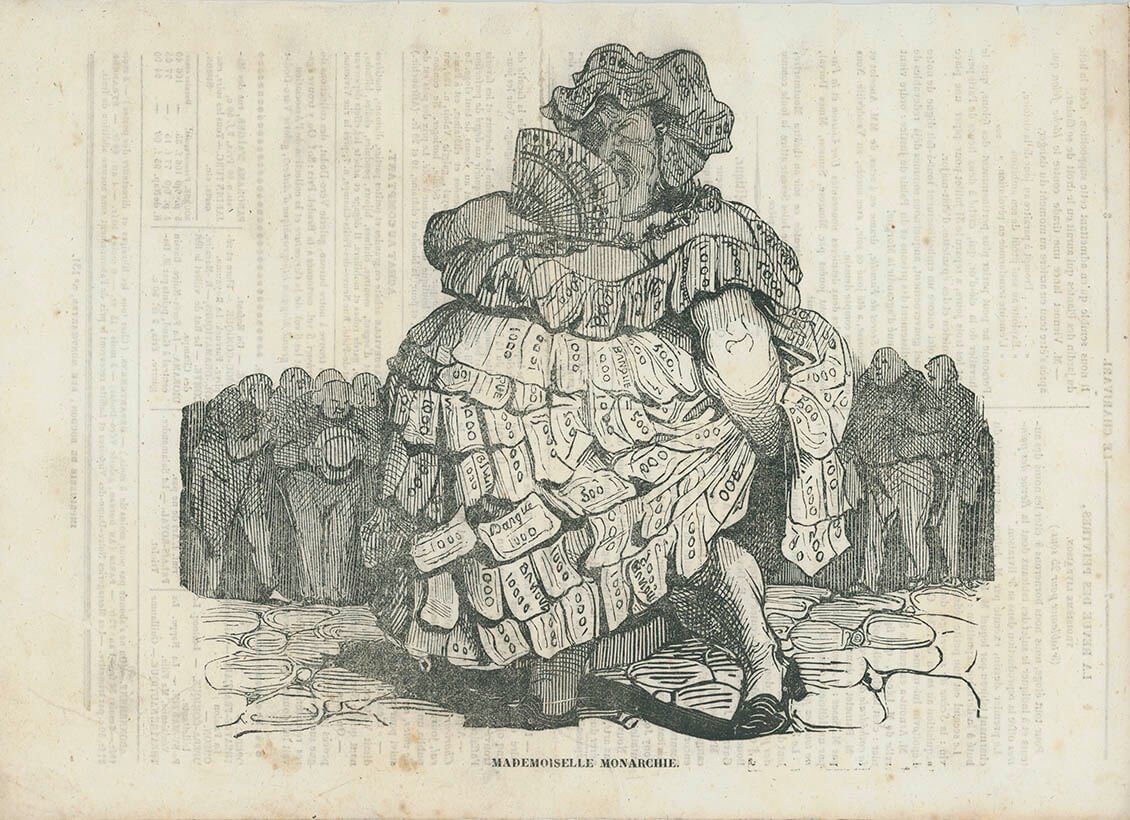Mademoiselle Monarchie
MADEMOISELLE MONARCHIE. Grabado de Honoré Daumier, publicado el 3 de julio de 1834 en Le Charivari. 21,5 x 30 cm. Reverso impreso. Papel con signos de uso. Con manchas de papel oxidado.
La imagen fue probablemente grabada en yeso e impresa de un contramolde en plomo. Este procedimiento fue usado de forma esporádica y sus impresos catalogados de forma errónea como xilografías a testa. William Ivins describe así un grabado de la misma serie: (…) possibly been executed in a variety of the «chalk plate» technique. In this process a layer of chalk was spread over a flat metal plate. The artist then scratched his lines through the chalk down to the metal surface. The plate was then used as the mold for a casting in type metal. The type metal cast was then printed like a woodcut. Sometimes white lines were engraved in the broader blacks of the casting (Ivins, 1943: 43). Ivins, W. M. Jr. How Prints Look. New York: The Metropolitan Museum of Art, 1943. https://www.metmuseum.org/art/metpublications/How_Prints_Look
Referencia: Daumier Register 5042 (MADEMOISELLE MONARCHIE.) http://www.daumier-register.org/werkview.php?key=5042 (…) E. Fuchs however, in «Daumier – Holzschnitte 1833-1870» after consultation with M. Ivins of the Metropolitan Museum in New York in 1920, suggests on page 29 of his work catalogue that all of the small portraits as well as some of the larger plates (DR 5025 to DR 5052) between February and September 1833 should not be classified as «wood engravings» but rather as «calcographic reproductions». We are not aware of any wood blocks still available of these prints, thus Fuchs’ argument may be a valid one. In «calcography» a thick calcium layer attached to a thin steel plate is painfully being engraved (directly?) by the artist. Fuchs feels that this process represents an even more direct transfer of the artist’s work than the wood engraving, where a second person, the engraver is involved. Eventually a lead copy was produced from the engraved steel plate which would then be attached to the printing press.

